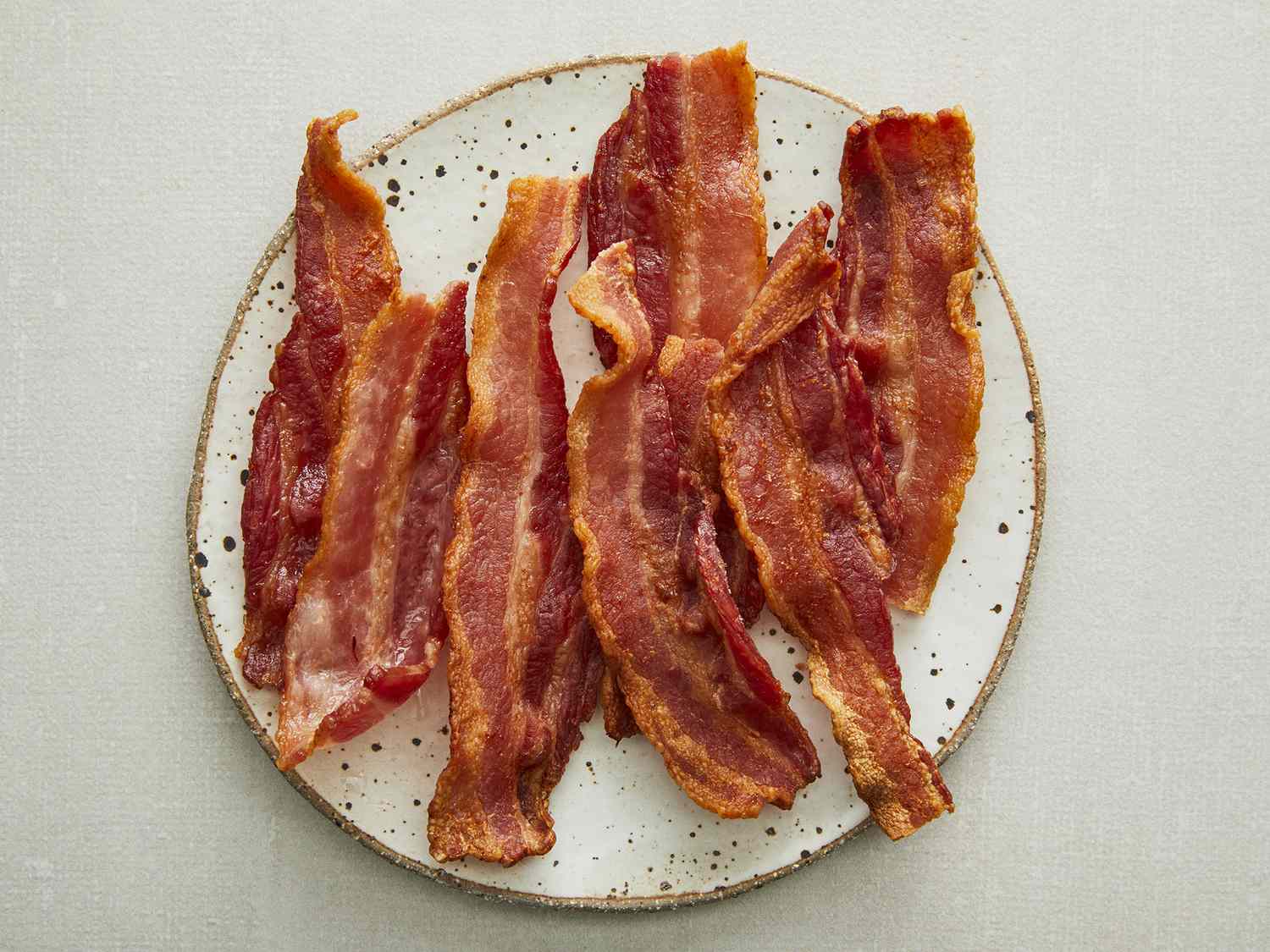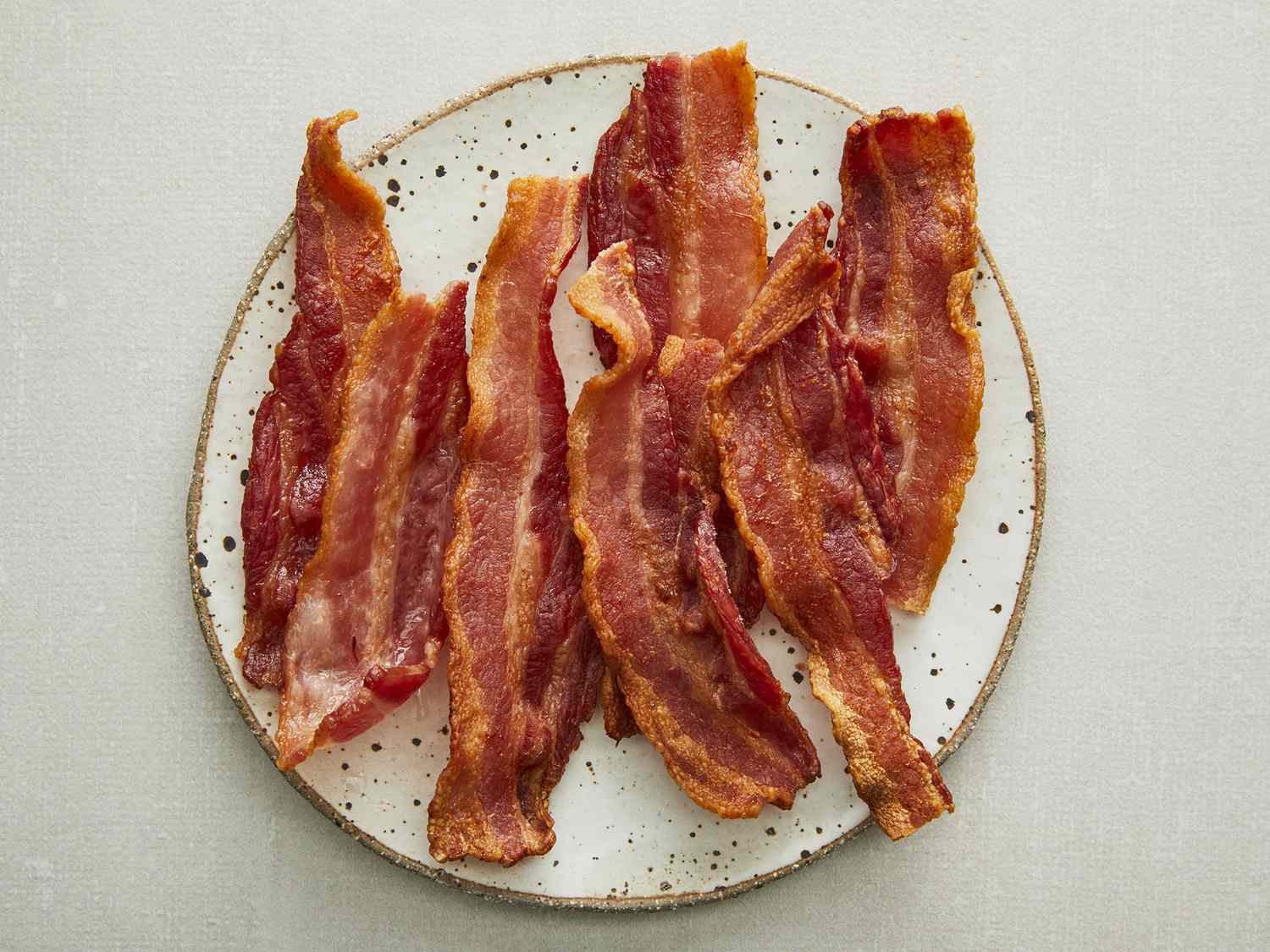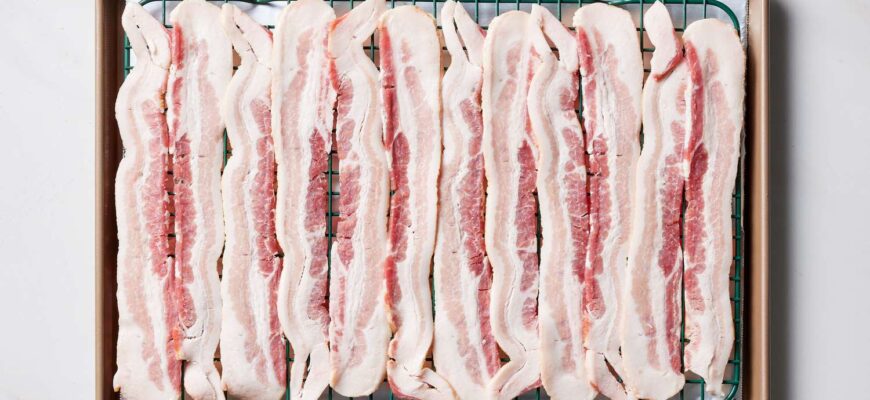Close


Photo:
Dotdash Meredith Food Studios
I’ve always joked that adding bacon to a recipe is just plain cheating. Its mixture of saltiness, smokiness, and flavorful fat can take an ordinary dish from ho-hum to holy moly! (This Brussels sprouts recipe is a good example.) Of course, it’s also delicious on its own, whether for breakfast or as a crunchy snack.
Bacon’s high fat content is what makes it so irresistible, but it’s also the reason it can quickly turn rancid. Spoiled bacon will ruin not only your meal, but possibly your day if you get a case of food poisoning. Here’s how you can tell if your bacon is safe to eat and also how long you should expect it to last.


Dotdash Meredith Food Studios
How to Tell If Bacon Has Gone Bad
- Appearance: Fresh bacon should be a vibrant pink with marbled white fat streaks. Any significant color change is a red flag. If you see a noticeable discoloration, like a grayish, greenish, or brownish tint, throw it out immediately. In some cases, you might be able to see mold spots that are either white or black. Don’t be tempted to cut off the visibly molded parts and use the rest. Even if you can’t see mold, it could be lurking there. When in doubt, throw it out.
- Texture: A slimy texture or stickiness on the bacon indicates bacteria is present. Slime occurs when bacteria begins to break down the meat. If your bacon is slimy or sticky to the touch, discard immediately.
- Smell: While fresh bacon has a subtle meaty smell, bacon that has gone bad will emit a strong, unpleasant odor. A sour or sulfuric smell means that bacteria, yeast, or fungi are growing on the meat, and it needs to be tossed out.
How Long Is Bacon Safe to Eat?
Like most refrigerated foods, bacon includes a “sell-by” date on its package, but its shelf life can vary depending on how it’s stored. Before buying, be sure to inspect the package to make sure the seal is tight. Then use this guide to safely store it.
Bacon vacuum-sealed in its original packaging lasts approximately two weeks in the fridge, while an opened package that’s been resealed lasts up to a week. Refrigerated cooked bacon is good for four to five days when stored in an airtight container. If storing in the freezer, use these timelines: Cooked bacon keeps for up to one month, unopened uncooked bacon lasts up to six months, and bacon that’s been opened but resealed in an airtight plastic bag keeps for about a month.


What Are the Best Ways to Store Bacon?
First and foremost, always store bacon in a refrigerator or freezer. When using the product, minimize the amount of time it spends at room temperature. If your bacon has been opened, place it in an airtight container and make sure it is tightly sealed. Restricting airflow keeps the meat healthy by preventing the growth of bacteria. When freezing cooked bacon, divide into small portions. Wrap each portion in a paper towel, then cover tightly with aluminum foil or plastic wrap. This will help prevent freezer burn.
What Happens When You Eat Spoiled Bacon?
Eating spoiled bacon can cause more than just an upset stomach. Food poisoning from Salmonella and Staphylococcus aureus may occur because these bacteria aren’t deterred by the salt or curing method used in bacon. Symptoms of food poisoning from bacon vary depending on the specific organism involved as well as the amount of spoiled food consumed. The most common symptoms are nausea and vomiting, but you might also experience diarrhea, abdominal pain, fever, chills, headaches, and muscle aches. The symptoms can begin as soon as 30 minutes after eating the contaminated food but may also take several days to appear. In rare cases, food poisoning from spoiled bacon can lead to serious complications, such as dehydration or kidney failure. In these cases, you should seek medical help.
Toss Your Salmon Immediately If You Notice These Signs
Was this page helpful?
Thanks for your feedback!
Tell us why!
Other
Submit






